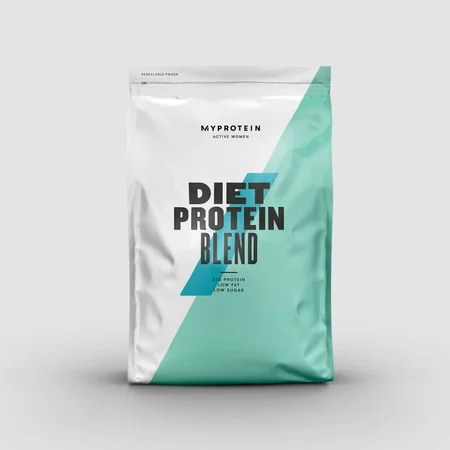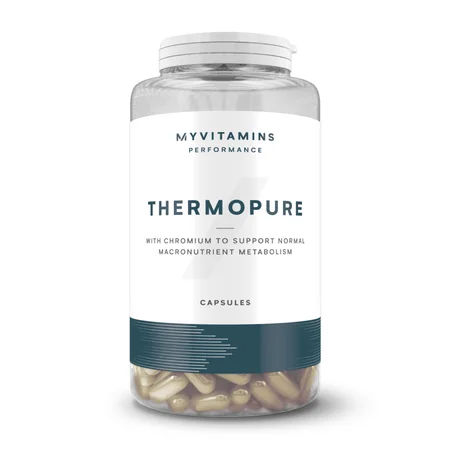How To Calculate BMR & TDEE (& Why It’s Important)

If you've ever tried to lose weight, you've probably heard of calorie counting. But is it really a simple case of calories in, calories out?
Put simply, yes. If you eat more calories than your body uses up, it'll store the excess energy as body fat, which over a long period of time can cause unwanted weight gain. The amount of energy you consume directly affects your body composition – full stop – so you need to know how much to eat every day.
The more complex answer is, however, 'yes, but there are a few things that can affect weight management and lean muscle mass retention'. We'll get to that after you calculate how many calories your body needs.
You can calculate the number of calories your body needs by calculating two things: your basal metabolic rate, or 'BMR', and your total daily energy expenditure, or 'TDEE'.
You'll find in this article:
How to calculate BMR How to calculate TDEE Energy expenditure definition What is BMR? BMR definition - What is TDEE? TDEE definition
Losing weight

How to Calculate BMR
It's useful to calculate your BMR so that you can work out how many calories your body requires to remain functioning. After you've calculated your BMR, you'll then be able to work out how many calories your body uses per day, including your daily activities and exercise. This is known as your TDEE, or 'total daily energy expenditure'. You can use this to work out how much you need to eat to lose, maintain, or gain weight. To calculate your BMR, you should know your weight in kilograms and your height in centimeters. Use one of the following formulas to calculate your BMR:
Women: 10 x weight (kg) + 6.25 x height (cm) - 5 x age (years) - 161
Men: 10 x weight (kg) + 6.25 x height (cm) - 5 x age (years) + 5
Now you've calculated your BMR using one of the above formulae, you can calculate your total daily energy expenditure (TDEE) in the following section. Your TDEE includes your daily activities and exercise.
How to Calculate TDEE?
First, you need work out your basal metabolic rate, or BMR. Your BMR is the amount of energy your body burns if you did nothing but rest for 24 hours. You can work this out in the section above. Once you've calculated your BMR, you can then work out your TDEE, based on the activities you do throughout the day. To calculate your TDEE, you need to look at the activities you do throughout the day. This is commonly expressed as your physical activity level (or your 'PAL'). Simply multiply your BMR by the PAL number that corresponds the most to your daily activities in the table below.
| Level of Activity |
Average PAL Value (multiply this value by your BMR to get your TDEE) |
| Sedentary or light activity lifestyle* | 1.5 |
| Active or moderately active lifestyle** | 1.8 |
| Vigorous or vigorously active lifestyle*** | 2.2 |
*Sedentary or light activity lifestyles: People who have jobs that don't demand much physical effort, don't walk long distances, use motor vehicles as transport, don't exercise or play sports regularly, spend most of the time sitting/standing without moving much.
**Active or moderately active lifestyles: People who have jobs that aren't too strenuous but involve more movement than sedentary jobs, for example, construction workers or people who perform agricultural chores. Conversely, this could be people who have sedentary jobs but participate in vigorous exercise or sports for around one hour per day (either continuously or intermittent bouts).
***Vigorous or vigorously active lifestyles: People that regularly engage in strenuous work or physical activity that lasts several hours, for example, swimmers that swim for more than two hours a day, those that work in the armed forces, or agricultural workers that do the majority of their work without machines (walking long distances, carrying heavy loads).
By multiplying your BMR by the physical activity level that corresponds the most with your lifestyle in the table above, you should now have worked out your TDEE. This is the number of calories you need to eat every day to maintain your current weight.
Energy Expenditure Definition
Energy expenditure is the amount of energy your body uses to perform bodily functions, such as breathing, keeping your heart beating and various metabolic processes, plus daily activities and physical activity. You need to consume this energy in the form of food. Energy from food is widely expressed in the form of 'kilocalories', or kcal (often simply called 'calories'). To maintain the same weight, you need to consume the same number of calories as your body expends or uses. This is known as 'energy balance'.
What is BMR? BMR Definition
Your BMR is your 'basal metabolic rate'. It's the amount of energy your body burns if you do nothing but rest for 24 hours. It represents the minimum amount of energy, i.e. calories, your body requires to remain functioning. It doesn't include the calories your body uses for exercise or general movement.
What is TDEE? TDEE Definition
Your TDEE is your 'total daily energy expenditure'. This is the amount of energy, i.e. calories, your body burns every day performing its bodily functions and also physical movement like daily activities and exercise. It's useful to calculate your TDEE to know how many calories you should be eating to maintain, lose, or gain weight (dependent on your goals). They say the average TDEE for women is around 2000kcal per day, whereas the average TDEE for men is around 2500kcal per day, however in reality, there is no one-size-fits-all for TDEE. Not everyone's TDEE is the same, as lots of factors can affect how much energy your body burns every day, like age, gender, height, weight, genetics, and activity level (i.e. how much you move).
Losing Weight
To lose weight, it's often recommended that you subtract around 500kcal from your TDEE, so your body uses energy from your fat stores.
There are approximately 3500kcal in 1 pound of fat, which means if you ate 500kcal less than your TDEE for 7 days, you should technically lose around 1 pound. This isn't completely accurate, however, as during periods of caloric deficit, your body will also use energy from muscle mass, which means you can lose lean tissue while dieting, too.
Two things are known to minimise the amount of muscle mass that you lose while dieting:
Consuming enough dietary protein 3,4 Weight training 5
Eating enough protein and training with weights is known to promote muscle-protein synthesis, i.e. muscle growth, which decreases the amount of muscle lost during calorie-restriction.
Additionally, after extended periods of dieting, the body typically adjusts to eating less and weight loss can often slow down. This is the body's way of preserving itself during periods of starvation, so unfortunately, weight loss isn't always a linear process.
Stick with it, though – you may need to adjust your diet and exercise regime if you're not seeing any progress.
Gaining Weight
Only looking to gain muscle, without losing fat? You'll have to eat a little more than your TDEE calorie value (scroll up to calculate your TDEE).
Eating between 250-500kcal extra per day in addition to your TDEE will help with muscle gain, along with getting the right amount of protein and ensuring you're stimulating muscle-protein synthesis (growth) by doing weight training. It's worth tracking your muscle gain by measuring your body every couple of weeks. If you're not seeing any changes (as everybody responds slightly differently), try increasing your calorie intake slightly (with healthy foods) and the amount of training you're carrying out, and continue to track any changes and adjust accordingly.
If you want to both lose fat and gain muscle, it's often recommended that you concentrate on one of those goals at a time, as both may not occur to their full potential if carried out at the same time. However a study has shown that you may be able to build muscle and lose fat simultaneously – but that's with a pretty strict diet and training regime.

Jennifer Blow has a Bachelor’s of Science in Nutritional Science and a Master’s of Science by Research in Nutrition, and now specialises in the use of sports supplements for health and fitness, underpinned by evidence-based research.
Jennifer has been quoted or mentioned as a nutritionist in major online publications including Vogue, Elle, and Grazia, for her expertise in nutritional science for exercise and healthy living.
Her experience spans from working with the NHS on dietary intervention trials, to specific scientific research into omega-3 fatty acid supplementation and also the effect of fast foods on health, which she has presented at the annual Nutrition Society Conference. Jennifer is involved in many continuing professional development events to ensure her practise remains at the highest level. Find out more about Jennifer’s experience here.
In her spare time, Jennifer loves hill walking and cycling, and in her posts you’ll see that she loves proving healthy eating doesn’t mean a lifetime of hunger.










